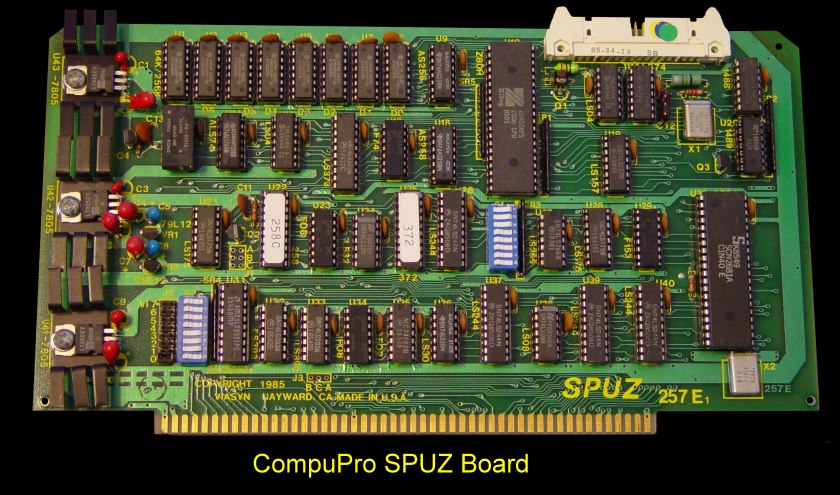
CompuPro - SPUZ Board
The company was known as Viasn at this time (1985), even though the
manual said CompuPro.

The SPUZ shows how far the S-100 bus had evolved. This
board probably represents the apex of perfection of S-100 8 bit CPU boards.
The board combined an 8 MHz Z80H, 64K or 256K of memory and two fully
bi-directional RS-232C serial I/O channels to perform a number of "slave
processing'1 tasks. Because each user had their own processor, memory
and serial ports, the overhead on the host system was reduced when the slave
was running an 8-bit task. When running 16- or 32-bit programs, the SPUZ
could be used as a front end I/O processor adding 8-bit processing
capability to the system (as with CompuPro 816/D1, El, Fl, G1 and 286
computers). Up to 16 SPUZs could be resident in the same mainframe.
In systems where high system throughput was necessary, this multiprocessing
configuration, in which host and slaves may run 8- and 16-bit software
simultaneously, it was faster and more efficient than dual processing
systems where one of the processors was stopped while the other is running.
The SPUZ met all IEEE 696/S-100 bus specifications and included the
following features:
- Fast 8MHz Z80H for high throughput.
- 64K or 256K bytes of RAM. Up to 16
SPUZ boards occupy only 64K of system memory.
- Dual bi-directional RS-232C serial ports.
- Fully software selectable serial port
parameters.
- Supported by CompuPro's Concurrent DOS 8-16
multi-user, multi-tasking operating system.
- True multi-processing instead of dual
processing.
- Ideal as an 8-bit node in a
"processor-per-user" system.
- Adds 8-bit capability to 16- or 32-bit
systems.
The manual for this excellent board can
be found here.
This page was last modified
on
01/08/2011


